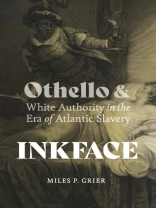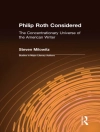In Inkface, Miles P. Grier traces productions of Shakespeare’s Othello from seventeenth-century London to the Metropolitan Opera in twenty-first-century New York. Grier shows how the painted stage Moor and the wife whom he theatrically stains became necessary types, reduced to objects of interpretation for a presumed white male audience. In an era of booming print production, popular urban theater, and increasing rates of literacy, the metaphor of Black skin as a readable, transferable ink became essential to a fraternity of literate white men who, by treating an elastic category of marked people as reading material, were able to assert authority over interpretation and, by extension, over the state, the family, and commerce. Inkface examines that fraternity’s reading of the world as well as the ways in which those excluded attempted to counteract it.
สารบัญ
Contents
Acknowledgments
Author’s Note
Introduction: The Residue of Inkface
Part I.
The Moor of Venice Reconstructed
1. “O Bloody Period”: Reconsidering Othello’s Constitution and Iago’s Motive
Part II. Women on the Verge of Whiteness
Interlude: Desdemona’s Guilt, or “The Farce of Dead Alive”
2. “Be Thus When Thou Art Dead”: Aphra Behn’s Remediation of
Othello
3. “Pale as Thy Smock”: Abigail Adams in Desdemona’s Whites
Part III. Crises of White Interpretive Fraternity
Interlude: Legends of Inept Spectatorship
4. The Cherokee
Othello: Treating with “The Base Indian”
5. Inkface to Chalkbones: The End of White Character Mastery in Melville’s “BC”
Epilogue: Beyond White Authority
Notes
Bibliography
Index
เกี่ยวกับผู้แต่ง
Miles P. Grier is Associate Professor of English at Queens College, City University of New York.












